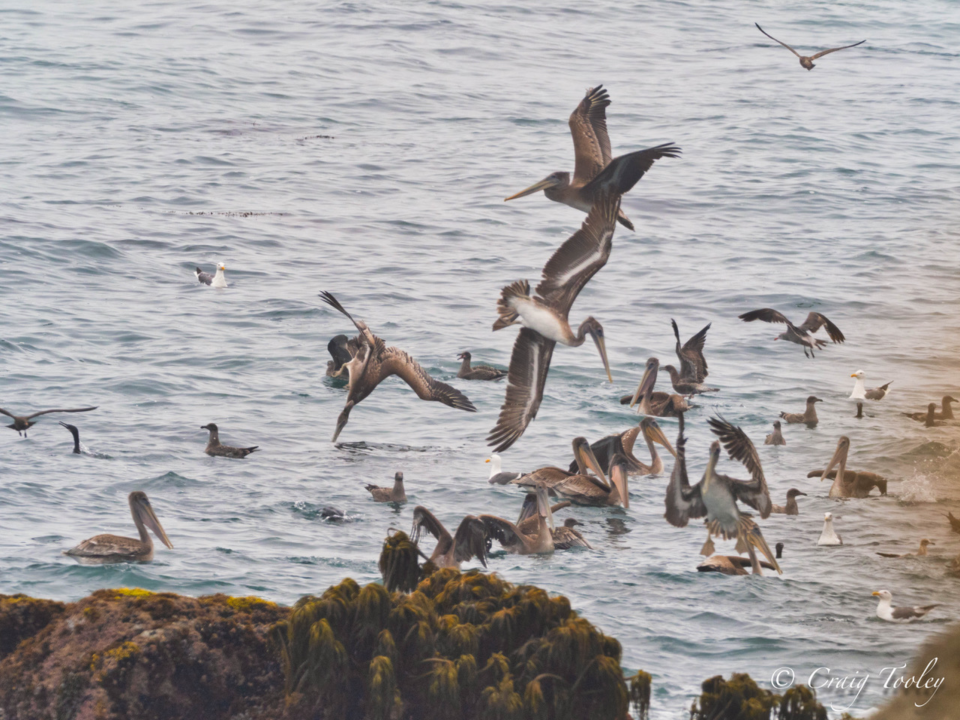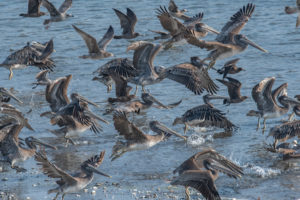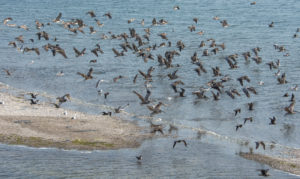Hundreds of young Brown Pelicans have been migrating northward. These hatched-this-year pelicans have brown heads and white underparts. They are accompanied by a few older pelicans. The adult pelicans have white heads and brown underparts. They are also accompanied by dark gulls, Heermann’s Gulls. These smart gulls let the pelicans find fish for them, sometimes even stealing it out of a pelican’s mouth.
When there is forage fish in the water, many birds feast. Craig Tooley photographed a feeding frenzy by Gualala Point Island with Brown Pelicans and several types of Gulls. Brown Pelicans plunge dive, beak first, for fish. It’s quite a sight.
Brown Pelicans also rest in rivers and on offshore rocks. Paul Brewer wrote, “There was a congregation of Brown Pelicans behind Breaker’s Inn having a spa day [on the Gualala River.] I got a few interesting shots from the Gualala Bluff Trail when they all decided to fly at once. They did that twice while I was there. They enjoyed their spa day, but all headed north about 6:30 pm.”
We almost lost Brown Pelicans due to the pesticide DDT, which made their eggshells so thin that they broke when the mothers sat on them. Since DDT was banned, the pelicans have recovered in numbers. To see them flying just over the bluffs is a thrilling sight.
Thanks to Craig and Paul for allowing me to share their photos with you here. To see much more of Craig's nature photography, here is his website: www.ruffimage.com. And to see more of Paul's nature photography, here is his website: http://www.capturingnatureswonders.com/



